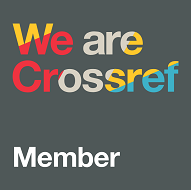ANALISIS KESALAHAN KONSEP DAN STRUKTUR PENGETAHUAN MAHASISWA SERTA PERBAIKANNYA MENGGUNAKAN WAWANCARA BERBASIS KONFLIK KOGNITIF PADA TOPIK IKATAN KIMIA
Abstract
Abstract: Analysis of Students’ Misconceptions and Knowledge Structure and Their Improvements Using Cognitive Conflict-Based Interview on Chemical Bond Topic. The aims of this mixed-method study are to investigate (1) the types of students’ misconceptions in chemical bonding topics, measured using a two-tier diagnostic test as well as a concept-map test, (2) the students’ knowledge structures, and (3) the effectiveness of cognitive-conflict based interviews to remedy students’ misconceptions and to improve the level of students’ knowledge structures. This study involved the first-semester students majoring in chemistry. The results show that (1) there are 10 types of students’ misconceptions in chemical bonding topics, with the conformity level of misconception identification of 50.94% (moderate) between the concept-map test and the two-tier diagnostic test is (2) most of the students (66.67%) have a low level of knowledge structures, and (3) cognitive-conflict based interviews are found to be effective in dealing with students’ misconceptions and in improving their knowledge structures.
Abstrak: Analisis Kesalahan Konsep dan Struktur Pengetahuan Mahasiswa Serta Perbaikannya Menggunakan Wawancara Berbasis Konflik Kognitif pada Topik Ikatan Kimia. Tujuan penelitian ini adalah untuk mengetahui 1) jenis-jenis kesalahan konsep mahasiswa pada topik ikatan kimia, baik yang diidentifikasi menggunakan tes two tier, maupun yang menggunakan tes peta konsep (2) struktur pengetahuan mahasiswa, dan (3) keefektifan wawancara berbasis konflik kognitif dalam memperbaiki kesalahan konsep dan struktur pengetahuan mahasiswa. Penelitian ini merupakan penelitian campuran (mixed-methods) dengan subject penelitian adalah mahasiswa semester 1 jurusan kimia yang telah memperoleh materi ikatan kimia. Hasil penelitian menunjukkan bahwa (1) terdapat 10 jenis kesalahan konsep mahasiswa pada topik ikatan kimia, tingkat kesesuaian identifikasi kesalahan konsep menggunakan tes peta konsep dengan tes diagnostik two-tier rata-rata sebesar 50,94% (sedang), (2) sebagian besar mahasiswa (66,67%) memiliki struktur pengetahuan yang rendah dan dan (3) wawancara berbasis konflik kognitif efektif dalam memperbaiki kesalahan konsep dan struktur pengetahuan mahasiswa.
Keywords
Full Text:
PDFReferences
Anzovino, M. E. & Bretz, S. L. 2016 . Organic Chemistry Students’ Fragmented Ideas about the Structure and Function of Nucleophiles and Electrophiles: A Concept Map Analysis. Chemical Education Research And Practice, 17, 1019-1029 .
Burrows & Mooring, N. L. & Mooring, S. R. 2014. Using Concept Mapping to Uncover Students’ Knowledge Structures of Chemical Bonding Concepts. Chemical Education Research And Practice, 16(1), 1-14.
Borda, J.E., Burgess, D. J.,Plog, C. J., Dekalb, N. C. & Luce, M. M. 2009. Concept Maps as Tools For Assesing Students Epistemologies of Science. Electronic Journal of Science Education, 13(2), 160-185.
Bretz, S. L. 2007. Qualitative Research Designs in Chemistry Education Research. In D. M. Bunce and R. S. Cole (Ed.), Nuts and Bolts of Chemical Education Research (pp. 79–99). Washington, D.C.: American Chemical Society.
Creswell, J.W. 2016. Research Design Pendekatan Metode Kualitatif, Kuantitatif, dan Campuran, Edisi Keempat. Terjemahan Achmad Fawaid dan Rianayanti Kusmini Pancasari. Yogyakarta: Pustaka Pelajar. 2014.
Effendy. 2012. A-Level Chemistry for Senior High School Students Vol 1B. Malang : Bayu Media.
Fajar, A. 2014. Menggali Pemahaman Konsep siswa SMA pada Topik Ikatan Kimia menggunakan Instrumen Diagnostik Two-Tier. Skripsi tidak dipublikasikan. Malang: Universitas Negeri Malang.
Francisco, J. S., Nakleh, M. B., Nurrenbern, S. C., & Miller, M. L. 2006. Assessing Student Understanding of General Chemistry with Concept Mapping. Journal of Chemical Education, 79(2), 248-257.
Hitipeuw, I. 2009. Belajar dan Pembelajaran. Malang: Fakultas Ilmu Pendidikan Universitas Negeri Malang.
Khodaryah, N. 2010. Analisis Kesalahan Konsep tentang Larutan Buffer pada Siswa Kelas XI SMAN 2 dan SMA YPK Bontang serta Upaya untuk Memperbaiki dengan Menggunakan Strategi Konflik Kognitif. Tesis tidak dipublikasikan. Malang: Jurusan Pendidikan Kimia, PPS UM.
Linenberger K. J. & Bretz, S. L. 2012. Generating Cognitive Dissonance in Student Interviews through Multiple Representations. Chemical. Education Research and Practice., 13, 172–178.
Lopez E. J., Shavelson R. J., Nandagopal K., Szu E. & Penn J. 2014. Factors Contributing to Problem-Solving Performance in First-Semester Organic Chemistry. J. Chem. Educ, 91(7), 976–981.
Luxford C. J. & Bretz S. L. 2013. Moving Beyond Definitions: What Student-Generated Models Reveal about Their Understanding of Covalent Bonding and Ionic Bonding, Chemical Education Research And Practice, 14, 214 -222.
Luxford C. J. & Bretz S. L. 2014. Development of the Bonding Representations Inventory to Identify Student Misconceptions about Covalent and Ionic Bonding Representations, J. Chem. Educ., 91(3), 312–320.
Nahum, L. T., Naman, R. M., & Hofstein, A. 2007. Developing a New Teaching Approach for the Chemical Bonding Concept Aligned with Current Scientific and Pedagogical Knowledge, Science Education, 91(4), 579-603.
Novak, J.D, 2010, Learning, Creating, and Using Knowledge: Concept Maps as Facilitative Tools in Schools and Corporations. Journal of E-Learning and Knowledge Society. 6(3), 21 - 30.
Schӧnborn K. J., Anderson T. R. & Mnguni L. E., . 2007. Methodsto determine the Role of External Representations in Developing Understanding in Biochemistry. In D. e. a. Lemmermohle (Ed.), Professionell lehren—erfolgreich lernen (pp. 291–301). Munster, Germany: Waxmann.
Taber, K. S. & Coll R. K.. 2003. Bonding, Chemical Education:Towards Research-based Practice. Springer. 213–234.
Vrabec, M. & Proksa, M. 2016. Identifying Misconceptions Related to Chemical Bonding Concepts in the Slovak School System Using the Bonding Representations Inventory as a Diag-ostic Tool. Journal of Chemical Education, 93(8) : 1364-1370.
Watkins, R., Meiers, M. W., & Visser, Y. L. 2011. A Guide to Assesing Needs: Essential Tools for Collecting Information, Making Decisions, and Achieving Development Results. Washington DC: The World Bank
Wheeldon J. P. & Faubert J. 2009. Framing Experience: Concept Maps, Mind maps, and Data Collection in Qualitative Research. Int. J. Qual. Meth, 8(3), 52–67.
DOI: http://dx.doi.org/10.17977/um048v24i1p38-46
Refbacks
- There are currently no refbacks.
Copyright (c) 2018 Jurnal Ilmu Pendidikan

This work is licensed under a Creative Commons Attribution 4.0 International License.
| Jurnal Ilmu Pendidikan |
![]() Jurnal Ilmu Pendidikan is licensed under a Creative Commons Attribution 4.0 International License.
Jurnal Ilmu Pendidikan is licensed under a Creative Commons Attribution 4.0 International License.

2.png)
1.png)
1.png)
1.png)
1.png)
4.png)
.png)
1.png)
.png)
.png)


3.png)
1.png)
1.png)


